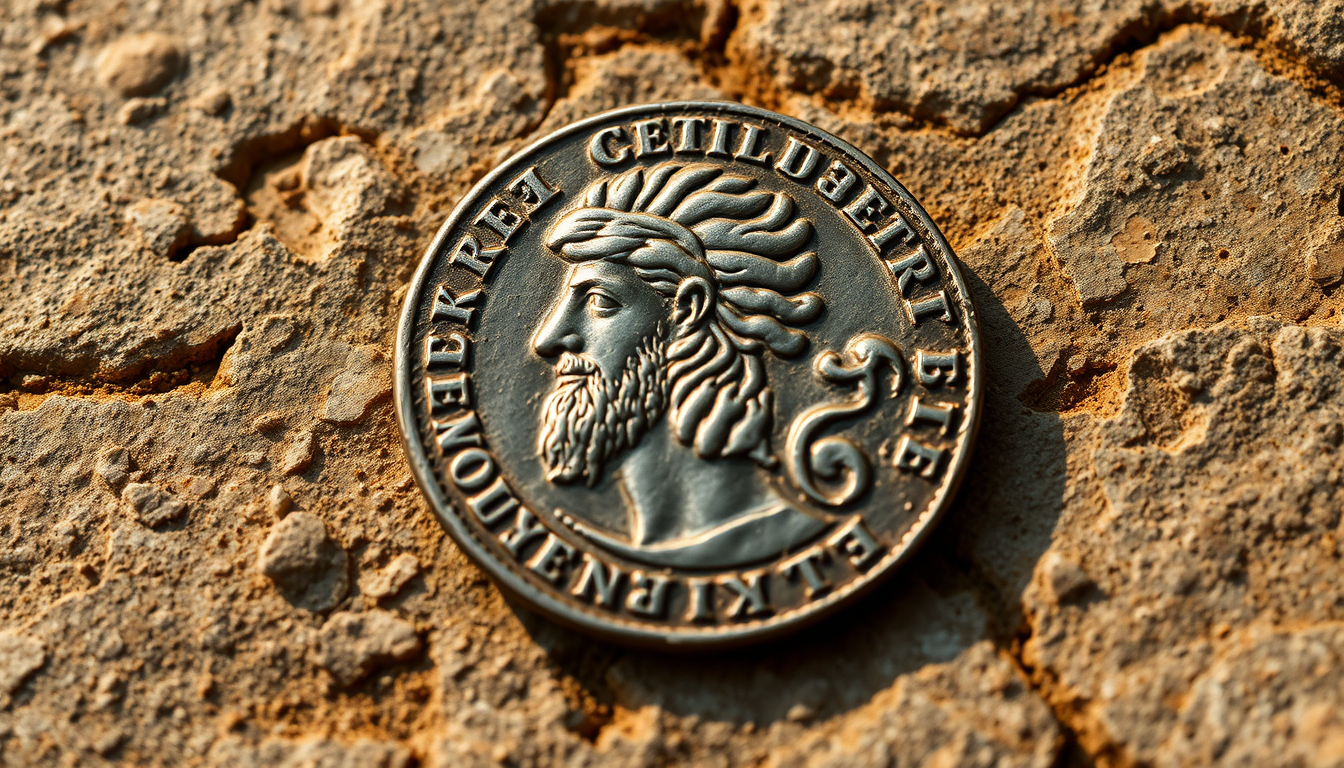La antigua civilización griega, famosa por su rico patrimonio cultural, sus ideas filosóficas y sus maravillas arquitectónicas, también dejó una huella indeleble en el mundo monetario. Desde la emblemática dracma hasta el intrincado estáter, las monedas de la antigua Grecia ofrecen una visión fascinante del tejido económico y social de esta notable era.
En el corazón del comercio de la antigua Grecia se encontraba la dracma, una moneda de plata que servía como unidad monetaria principal. Estas monedas no eran simplemente un medio de intercambio, sino también un reflejo de las identidades de las ciudades-estado, y a menudo ostentaban los emblemas y símbolos de sus respectivas regiones. El anverso de una dracma podía presentar la cabeza de una deidad, como Atenea o Zeus, mientras que el reverso podía representar un símbolo de la ciudad-estado, como un búho o un tridente.
Junto con la dracma, los antiguos griegos también utilizaban el óbolo, una moneda de plata más pequeña, y el estáter, una moneda de oro más grande. Estas denominaciones permitían un sistema económico más matizado y diverso, que satisfacía las necesidades tanto de las transacciones cotidianas como del comercio a gran escala. El proceso de acuñación de estas monedas era un testimonio de la destreza tecnológica de los griegos, con diseños intrincados y una artesanía precisa.
Los materiales utilizados en la producción de monedas de la antigua Grecia fueron igualmente importantes. Si bien la plata y el oro eran los metales predominantes, los griegos también emplearon cobre y bronce, creando una gama diversa de monedas que reflejaban la riqueza y los recursos de sus respectivas ciudades-estado. La estandarización de estas monedas en todo el mundo griego facilitó el comercio y contribuyó a la prosperidad económica de la región.
Más allá de su función práctica, las monedas de la antigua Grecia también tenían un inmenso valor simbólico. Los diseños de estas monedas a menudo presentaban figuras mitológicas, deidades y otros íconos culturales, y servían como representación visual de la rica mitología y las creencias religiosas de los griegos. Estas monedas no eran simplemente un medio de intercambio, sino también un medio para la difusión de la identidad y el patrimonio culturales.
Hoy en día, la colección de monedas de la antigua Grecia se ha convertido en una actividad apasionante para muchos entusiastas e historiadores. Estos artefactos ofrecen una conexión tangible con el pasado, lo que nos permite comprender mejor la dinámica económica, social y cultural del mundo griego antiguo. Tanto si eres un coleccionista experimentado como si simplemente te fascina la historia de esta notable civilización, explorar el mundo de las monedas de la antigua Grecia es un viaje que promete cautivarte y esclarecerte.
El dracma: la piedra angular de la moneda griega antigua
La dracma, moneda de plata que sirvió como unidad monetaria principal en la antigua Grecia, era más que un simple medio de intercambio. Era un símbolo de la identidad de las ciudades-estado, y a menudo ostentaba los emblemas y símbolos que representaban a sus respectivas regiones. Los intrincados diseños de estas monedas, que presentaban las cabezas de deidades y otros íconos culturales, no solo facilitaban el comercio, sino que también servían como medio para difundir la rica mitología y las creencias religiosas de los griegos.
El óbolo y el estátero: diversificando la economía de la antigua Grecia
Junto con la dracma, los antiguos griegos también utilizaban el óbolo, una moneda de plata más pequeña, y el estáter, una moneda de oro más grande. Estas denominaciones permitieron un sistema económico más matizado y diverso, que satisfacía las necesidades tanto de las transacciones cotidianas como del comercio a gran escala. La estandarización de estas monedas en todo el mundo griego facilitó el flujo de bienes y servicios, lo que contribuyó a la prosperidad económica de la región.
Los materiales y el proceso de acuñación: la destreza tecnológica de los antiguos griegos
Los materiales utilizados en la producción de las monedas de la antigua Grecia eran igualmente importantes. Si bien la plata y el oro eran los metales predominantes, los griegos también empleaban cobre y bronce, creando una amplia gama de monedas que reflejaban la riqueza y los recursos de sus respectivas ciudades-estado. El proceso de acuñación de estas monedas era un testimonio de la destreza tecnológica de los griegos, con diseños intrincados y una artesanía precisa.
El legado de la moneda griega antigua: recopilación y preservación de la historia
Hoy en día, la colección de monedas de la antigua Grecia se ha convertido en una actividad apasionante para muchos entusiastas e historiadores. Estos artefactos ofrecen una conexión tangible con el pasado, lo que nos permite comprender mejor la dinámica económica, social y cultural del mundo griego antiguo. Tanto si eres un coleccionista experimentado como si simplemente te fascina la historia de esta notable civilización, explorar el mundo de las monedas de la antigua Grecia es un viaje que promete cautivarte y esclarecerte.

